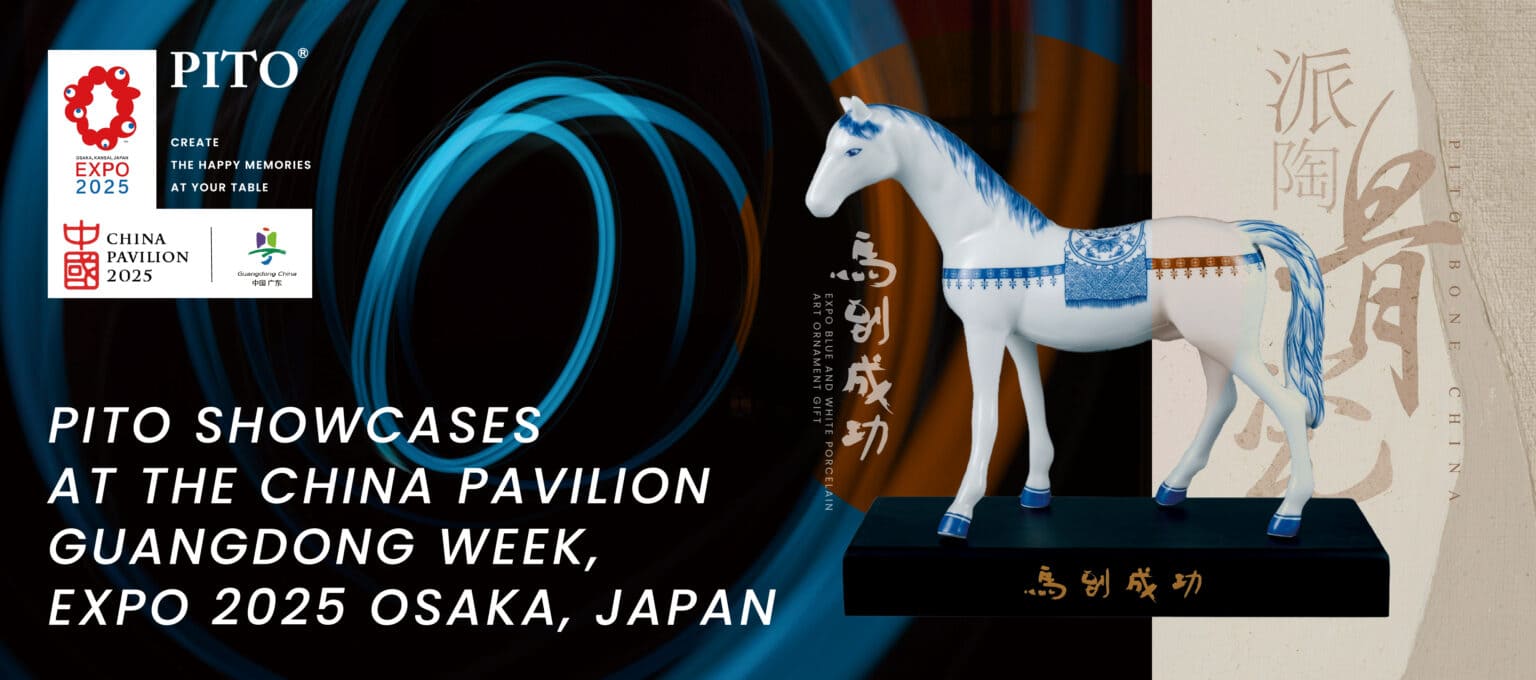
Source:Pixabay.com
Porcelain dishes is very common in our daily lives. Porcelain is easy to clean, does not get damaged by immersion and does not stain. It is usually white, and the high-temperature firing process used to produce it usually gives it a translucent appearance.
People always says porcelain dishes is enduring because it is durable and beautiful, and safe to use. It is also considered to be the most durable tableware on the market.
Is porcelain dinnerware durable in fact? Today let us check out the answer to see the porcelain plates durability.

Source:Pixabay
Dishwasher & Microwave Friendly
Porcelain is considered to be a supreme material in the field of tableware. The finest porcelain is known for its resilience, strength, transparency and permeability. Having fine porcelain is a good reward for your allocation – it can make you the best cookware out of your money.
The main component of porcelain is kaolin clay, native to China and the Limoges region of France.
It may look fragile and break easily. So do porcelain plates break and chip easily?Actually no. Since this material-kaolin clay, is made by heating the clay at high temperatures, typically above 2,372 degrees Fahrenheit, this makes the dinnerware as strong and durable as glass, make sure its porcelain plates durability. It can withstand certain conditions that some dishes cannot, being able to withstand temperatures much higher than anything dishwashers and microwaves can reach.
As a result, the porcelain dinnerware itself can easily resist the heat of microwaves without damage, and can withstand extreme heat and cold – it can be placed in microwaves and dishwashers without breaking.
The high temperatures used to fire porcelain dinnerware make it dishwasher and microwave safe – if made with regular ingredients. Most porcelain dishes on the market come with a microwave-safe label from the manufacturer.
While porcelain dishes are resistant to chipping and cracking, porcelain can also break, chip or crack if mishandled or overheated in the microwave. But the same thing happens with tempered glass or plastic dishes, two other types of durable tableware. Some plastic dinnerware will melt in the dishwasher, and if you break tempered glassware, it will shatter into many split pea-sized pieces. Instead of buying patterned dinnerware, opt for white porcelain plates, which has a permanent appeal. It is more heat and cold resistant than other dinnerware under the same conditions.

Source:Pixabay
What Ensures the Durability of Porcelain Plates?
How durable is porcelain dinnerware? Now let’s see what makes porcelain dinnerware so durable. There are 5 main reasons.
Thermal Stability
Good thermal stability and slow heat transfer. Daily meals have the property of not bursting easily when subjected to a certain temperature difference.
Chemical Stability
Good chemical stability and durability. To the atmosphere of acid, alkali, salt, carbonic acid gas has a certain resistance, not easy to chemical reaction with other substances, not rust, not aging to keep the porcelain plates durability. So the process of daily use we do not have to worry about the intake of a large number of harmful metals.
Easy to Maintain
Easy to wash and keep clean. Porcelain glaze bright and delicate, stained with color is easy to be washed off.
Structure
Porcelain is less porous, and with low water absorption rate. Use porcelain tableware to store food, sealed tightly, can prevent the evaporation of water penetration in food and the invasion of external bacteria.
Outer Materials
The colorful decoration, with its plasticity, diverse patterns, you can make a variety of different forms of tableware. Whether it is a wine glass, rice bowls, dishes, etc., can be used porcelain products, many families often use a full set of porcelain tableware, a set of similar patterns of tableware, as decoration. Especially high-temperature glaze and lapidary decoration and other non-lead poisoning hazards, you can boldly use.
These 5 advantages of porcelain tableware, deeply reflects the durability of porcelain, people’s choice are related to these factors, porcelain tableware is extremely small harm to human body, easy to clean, not easy to break, fine craftsmanship, very practical and existence of value for people.

Source:Pixabay
Durability: Porcelain vs Stoneware
Objects made of clay and porcelain, which are different in nature, can be called ceramics after the process of batching, molding, drying and firing.
And the vessels fired with clay are called pottery. Vessels fired with porcelain clay are called porcelain.
But between porcelain and pottery, stands stoneware, which is equipped with high strength and good thermal stability, and is lead-free, non-toxic, high-quality and eco-friendly.
According to national standards, the water absorption rate of less than 0.5% for porcelain, water absorption rate of more than 10% for the ceramic, and stoneware water absorption rate between ceramic and porcelain is also known as semi-porcelain or fine ceramic.
Is stoneware or porcelain more durable? Let’s see their differences.
The temperature to produce pottery is generally around 700°C-1000°C up to 1100°C,for porcelain it is generally above 1200°C, and some will even reach around 1400°C. The firing temperature of stoneware is about 1140 ℃ ~ 1280 ℃, belongs to the medium temperature porcelain. Stoneware’s heat resistance is relatively poorer than porcelain.
Stoneware
Stoneware is a ceramic product between earthenware and porcelain. It is characterized by a very low porosity of blank, so it is fine and hard with high mechanical strength. In this point, it is not so easily broken like porcelain.
Depending on the impurities contained in the raw material, stoneware blanks can be grayish white to reddish brown in color. The general production process of daily stoneware is close to that of porcelain and is also made from raw materials such as clay, feldspar, and quartz. Compared to porcelain, the amount of clay in the biscuit is higher, the control of impurities is not as strict as in porcelain, and the amount of feldspar is much less than in porcelain.
Kaolin, waste porcelain powder and talc are sometimes added to stoneware to facilitate thermal stability and strength, and to increase the sintering range.
The firing temperature of stoneware can be as low as 1160°C and as high as 1210°C depending on the amount of its fusible content, and can be fired in two parts with low-temperature fusible glaze, or in one firing with high-temperature raw material glaze. The mechanical strength and thermal stability of stoneware is much better than porcelain, and has been increasingly adopted in the international market.
The main difference between stoneware and porcelain is that most stoneware blanks are colored and non-translucent. Because stoneware is dense, it is glazed only for decoration. And the decoration method is less costly. So which is more durable, porcelain or stoneware? We shall see from difference aspects. Stoneware’s thermal conductivity is worse than porcelain, thermal stability is better than porcelain, and strength is higher.

Source:Pixabay
Durability: Porcelain vs Ceramic
Now let’s look at porcelain and ceramic, both porcelain and pottery fall into the category of ceramics , so let’s see their differences.
Ceramics Include Pottery and Porcelain
Pottery is made of ordinary clay, while porcelain is made of china clay (kaolin). The firing temperature of pottery is about 900 degrees, while porcelain requires about 1200 degrees to be fired.
Pottery is not glazed or glazed with low temperature, porcelain is more glazed.
Pottery body is coarse and loose, high water absorption rate in the section, porcelain after high-temperature firing, the body is strong and dense, the section basically does not absorb water, knocking it will make a crisp metallic sound.
Porcelain
Porcelain is a prettier version of pottery. Due to the high temperature of firing, porcelain is superior to pottery in density, gloss quality, hardness, anti-permeability, etc. It is because of these characteristics of porcelain, it is portrayed on the exquisite group and rich colors too.
Important difference between pottery and porcelain is that the raw material of pottery clay contains a lot of iron, while in the raw materials of porcelain, iron assume only a very small part. Furthermore, the raw material of porcelain kaolin clay contains a high percentage of aluminum, which gives porcelain high temperature resistance. That is, the raw materials determine the process, also determines the characteristics of the product. Generally the porcelain is more durable than the pottery.

Conclusion
Is porcelain dinnerware durable in fact? The answer is yes. We prove that porcelain dishes is relatively durable than most of other types of dinnerware in many aspects.
Nowadays there are a variety of porcelain products on the market, we must learn to identify when choosing such porcelain tableware, to prevent buying inferior products, affecting the use.
The development of porcelain dinnerware has gone through a long process, a wide range of brightly colored porcelain tableware is available to meet the diverse needs of people. And I believe that in the future, porcelain tableware will be more efficient, convenient to daily use.


